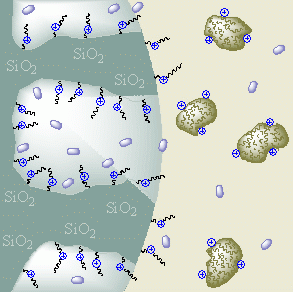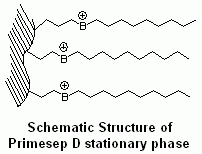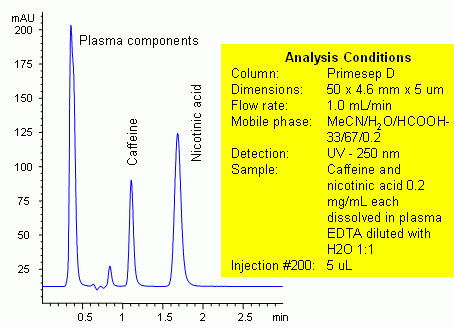|
Direct Plasma Analysis
The Primesep® D column demonstrates high analyte recovery and high selectivity. Proteins and peptides elute as a sharp peak in void or pre-void time and they don’t interfere with the analytes’ peaks. A simple bypass valve can be used to remove the protein peak from reaching the detector by diverting flow to waste in the first 40 seconds (for a 50 mm long column — time may need to be increased if longer columns are used).
|

© SIELC Technologies. 2002 - 2026
Sign up to our newsletter
Contact
Address: 804 Seton Court, Wheeling, IL USA 60090
Tel: (847) 229-2629 | Fax: (847) 655-6079
Sales, Refund and Returns Policy
Email: mail@sielc.com | Sitemap
Host a Customized Seminar at Your Company
Delivering tailored seminars directly to your team.


